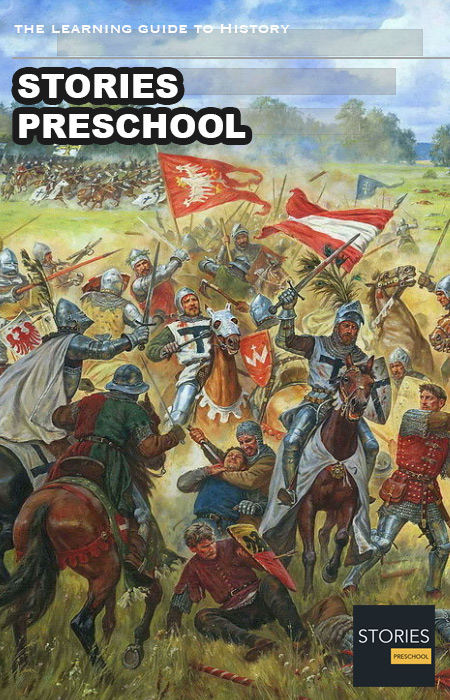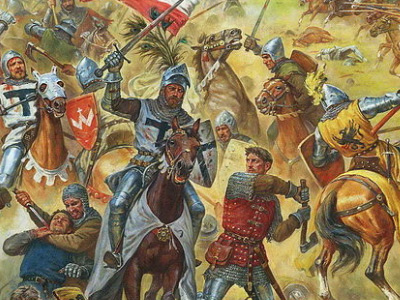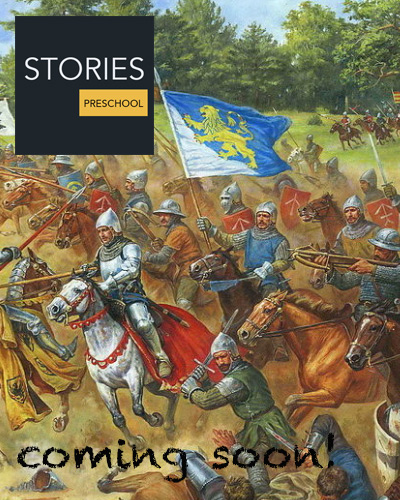Battle of Grunwald (1410)
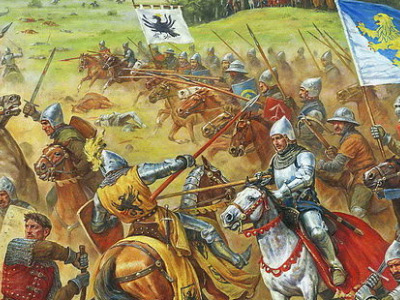
The Battle of Grunwald, First Battle of Tannenberg or Battle of Žalgiris, was fought on 15 July 1410 during the Polish–Lithuanian–Teutonic War. The alliance of the Kingdom of Poland and the Grand Duchy of Lithuania, led respectively by King Władysław II Jagiełło (Jogaila) and Grand Duke Vytautas, decisively defeated the German–Prussian Teutonic Knights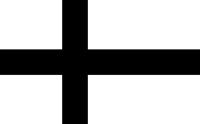 The Teutonic Order is a Catholic religious institution founded as a military society c. 1190 in Acre, Kingdom of Jerusalem. The Order of Brothers of the German House of Saint Mary in Jerusalem was formed to aid Christians on their pilgrimages to the Holy Land and to establish hospitals. Its members have commonly been known as the Teutonic Knights, having a small voluntary and mercenary military membership, serving as a crusading military order for the protection of Christians in the Holy Land and the Baltics during the Middle Ages., led by Grand Master Ulrich von Jungingen. Most of the Teutonic Knights' leadership were killed or taken prisoner. Although defeated, the Teutonic Knights withstood the siege of their fortress in Marienburg (Malbork) and suffered minimal territorial losses at the Peace of Thorn (1411) (Toruń), with other territorial disputes continuing until the Peace of Melno in 1422. The knights, however, would never recover their former power, and the financial burden of war reparations caused internal conflicts and an economic downturn in the lands under their control. The battle shifted the balance of power in Central and Eastern Europe and marked the rise of the Polish–Lithuanian union as the dominant political and military force in the region.
The Teutonic Order is a Catholic religious institution founded as a military society c. 1190 in Acre, Kingdom of Jerusalem. The Order of Brothers of the German House of Saint Mary in Jerusalem was formed to aid Christians on their pilgrimages to the Holy Land and to establish hospitals. Its members have commonly been known as the Teutonic Knights, having a small voluntary and mercenary military membership, serving as a crusading military order for the protection of Christians in the Holy Land and the Baltics during the Middle Ages., led by Grand Master Ulrich von Jungingen. Most of the Teutonic Knights' leadership were killed or taken prisoner. Although defeated, the Teutonic Knights withstood the siege of their fortress in Marienburg (Malbork) and suffered minimal territorial losses at the Peace of Thorn (1411) (Toruń), with other territorial disputes continuing until the Peace of Melno in 1422. The knights, however, would never recover their former power, and the financial burden of war reparations caused internal conflicts and an economic downturn in the lands under their control. The battle shifted the balance of power in Central and Eastern Europe and marked the rise of the Polish–Lithuanian union as the dominant political and military force in the region.
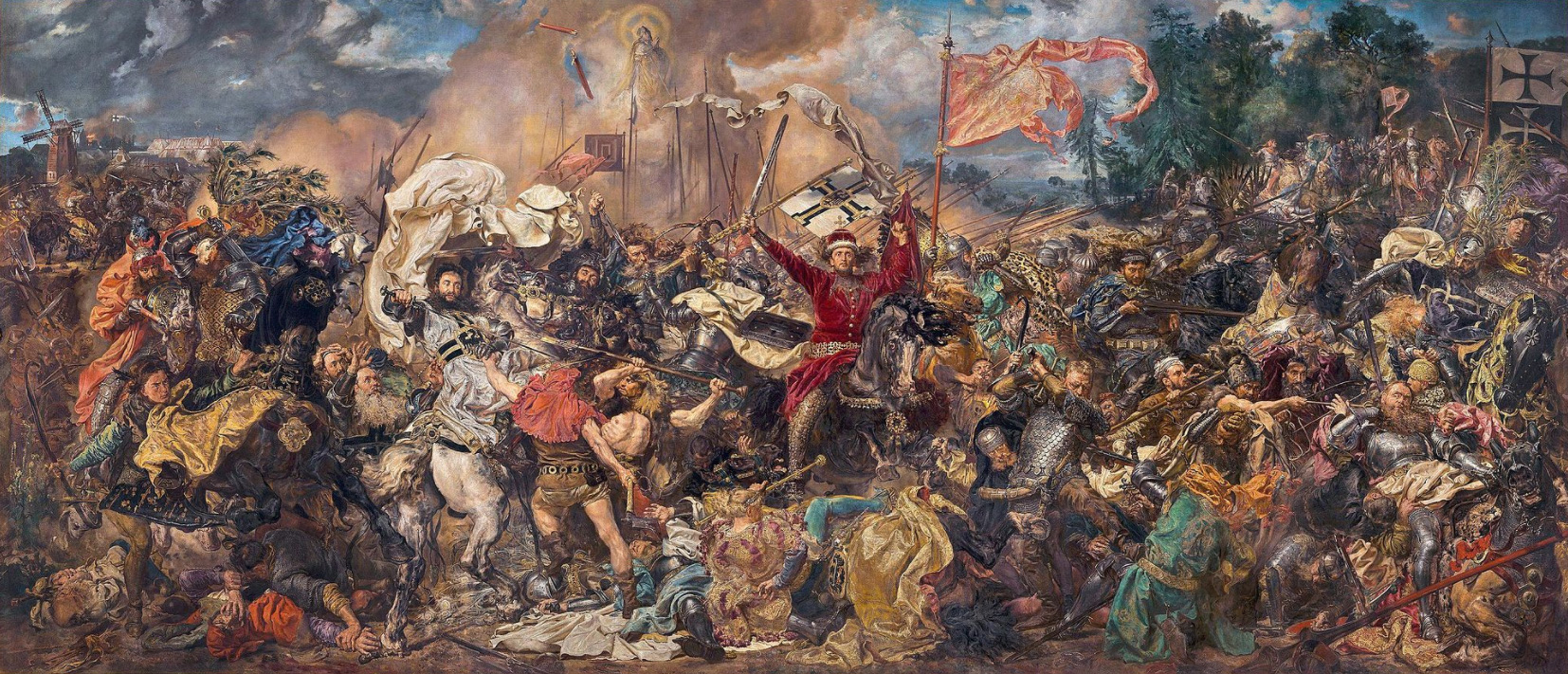
Battle of Grunwald by Jan Matejko (1878)

Battle of Grunwald by Jan Matejko (1878)
( Click image to enlarge)
The battle was one of the largest in Medieval Europe and is regarded as the most important victory in the histories of Poland and Lithuania, and is also widely celebrated in Belarus. It has been used as a source of romantic legends and national pride, becoming a larger symbol of struggle against foreign invaders. During the 20th century the battle was used in Nazi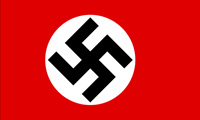 Nazi Germany (officially known as the German Reich from 1933 until 1943, and the Greater German Reich from 1943 to 1945) was the German state between 1933 and 1945, when Adolf Hitler and the Nazi Party controlled the country, transforming it into a dictatorship. Under Hitler's rule, Germany quickly became a totalitarian state where nearly all aspects of life were controlled by the government. and Soviet
Nazi Germany (officially known as the German Reich from 1933 until 1943, and the Greater German Reich from 1943 to 1945) was the German state between 1933 and 1945, when Adolf Hitler and the Nazi Party controlled the country, transforming it into a dictatorship. Under Hitler's rule, Germany quickly became a totalitarian state where nearly all aspects of life were controlled by the government. and Soviet Soviet Union, officially the Union of Soviet Socialist Republics (USSR), was a transcontinental country that spanned much of Eurasia from 1922 to 1991. The Soviet Union fall process began with growing unrest in the Union's various constituent national republics developing into an incessant political and legislative conflict between them and the central government. Estonia was the first Soviet republic to declare state sovereignty inside the Union. propaganda campaigns. Only in recent decades have historians moved towards a dispassionate, scholarly assessment of the battle, reconciling the previous narratives, which differed widely by nation.
Soviet Union, officially the Union of Soviet Socialist Republics (USSR), was a transcontinental country that spanned much of Eurasia from 1922 to 1991. The Soviet Union fall process began with growing unrest in the Union's various constituent national republics developing into an incessant political and legislative conflict between them and the central government. Estonia was the first Soviet republic to declare state sovereignty inside the Union. propaganda campaigns. Only in recent decades have historians moved towards a dispassionate, scholarly assessment of the battle, reconciling the previous narratives, which differed widely by nation.
Sources
There are few contemporary, reliable sources about the battle, and most were produced by Poles. The most important and trustworthy source is Cronica conflictus Wladislai regis Poloniae cum Cruciferis anno Christi 1410, which was written within a year of the battle by an eyewitness. Its authorship is uncertain, but several candidates have been proposed: Polish deputy chancellor Mikołaj Trąba and Władysław II Jagiełło's secretary Zbigniew Oleśnicki. While the original Cronica conflictus did not survive, a short summary from the 16th century has been preserved. Another important source is Historiae Polonicae by Polish historian Jan Długosz (1415–1480). It is a comprehensive and detailed account written several decades after the battle. The reliability of this source suffers not only from the long gap between the events and the chronicle, but also Długosz's biases against the Lithuanians. Banderia Prutenorum is a mid-15th-century manuscript with images and Latin descriptions of the Teutonic battle flags captured during the battle and displayed in Wawel Cathedral and Vilnius Cathedral. Other Polish sources include two letters written by Władysław II Jagiełło to his wife Anne of Cilli and Bishop of Poznań Wojciech Jastrzębiec and letters sent by Jastrzębiec to Poles in the Holy See. German sources include a concise account in the chronicle of Johann von Posilge. A recently discovered anonymous letter, written between 1411 and 1413, provided important details on Lithuanian maneuvers.
HISTORY
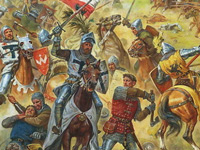
RESOURCES
This article uses material from the Wikipedia article "Battle of Grunwald (1410)", which is released under the Creative Commons Attribution-Share-Alike License 3.0.
© Stories Preschool. All Rights Reserved.
